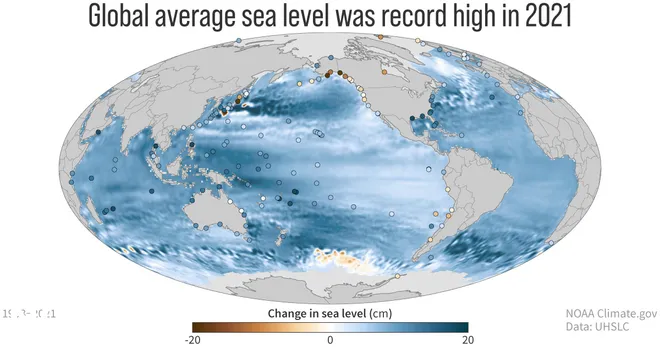Is New York City sinking? NASA finds metropolitan area slowly submerging
Scientists found most of the New York City metropolitan area is slowly sinking, making the region riskier to flooding, according to a study published this week.
A team of scientists from NASA's Jet Propulsion Laboratory in Southern California and Rutgers University in New Jersey published the study in Science Advances. They found the major metro area is sinking by an average of 0.06 inches per year.
The study came as New York State Gov. Kathy Hochul declared a state of emergency Friday, with heavy rain causing flash floods in Manhattan, Staten Island and Brooklyn.
Scientists studied the region's vertical land motion from 2016 to 2023 to see how much the land sinks or rises. They used interferometric synthetic aperture radar to study the land's topography.
Climate change threatens glaciers:Most glaciers on track to melt away by 2100, but some can still be saved, study finds
"Much of the motion they observed occurred in areas where prior modifications to Earth’s surface – such as land reclamation and the construction of landfills – made the ground looser and more compressible beneath subsequent buildings," Sally Younger of NASA's Earth Science News Team wrote Wednesday.
The study found Arthur Ashe Stadium, built on top of a landfill in the Flushing neighborhood of Queens, is sinking the fastest at 0.18 inches per year. On the other hand, Woodside in Queens, is rising at 0.27 inches per year.
A similar study released in May by University of Rhode Island oceanologists and the U.S. Geological Survey found a number of large buildings in New York City are contributing to the subside.

What parts of New York are sinking the most?
LaGuardia Airport is also sinking, at about 0.15 inches per year, according to the study. According to the airport's website, it's in the middle of an $8 billion renovation to address several longstanding issues and to mitigate major flooding. The international airport sits next to Flushing Bay in Queens.
Outside of New York City, the communities of Newark, Kearny and Harrison in New Jersey are sinking. The study didn't provide the rate at which the locations are sinking.
Sinking threatens the metropolitan area, researchers said, with the sea level at The Battery, a park in Manhattan, rising 0.12 inches per year in the 1900s. More recently, the sea level has risen at a rate of 0.17 inches per year.
According to NASA's sea level prediction tool, scientists predict the sea level to rise 0.04 inches by the year 2100.
"The city has long dealt with coastal flooding from both hurricanes and extratropical storms, but as seen with Superstorm Sandy in 2012, storm surges associated with severe weather events are becoming more destructive because of ongoing sea level rise," the scientists wrote.

Parts of Queens, Brooklyn rising
The study isn't all doom and gloom for the country's most populated city. Brooklyn's East Williamsburg and Queens' Woodside neighborhoods are rising.
Scientists credited the Brooklyn neighborhood's rate to oil being drained from Newton Creek, which sits between Queens and Brooklyn and flows into the East River.
But for many of New York City, the outlook isn't great.
Oceanologists and researchers found in a May study the city is home to more than 1 million buildings, weighing nearly 1.7 trillion pounds. The study said the city sinks between 0.03 to 0.08 inches per year.
The study said parts of lower Manhattan, Brooklyn, Queens and Long Island showed signs of subsidence.
They concluded each additional high-rise constructed in a coastal, river or lakefront setting contributes to future flood risks and "mitigation strategies may need to be included."

Contributing: Camille Fine, Cybele Mayes-Osterman, USA TODAY.
Disclaimer: The copyright of this article belongs to the original author. Reposting this article is solely for the purpose of information dissemination and does not constitute any investment advice. If there is any infringement, please contact us immediately. We will make corrections or deletions as necessary. Thank you.



